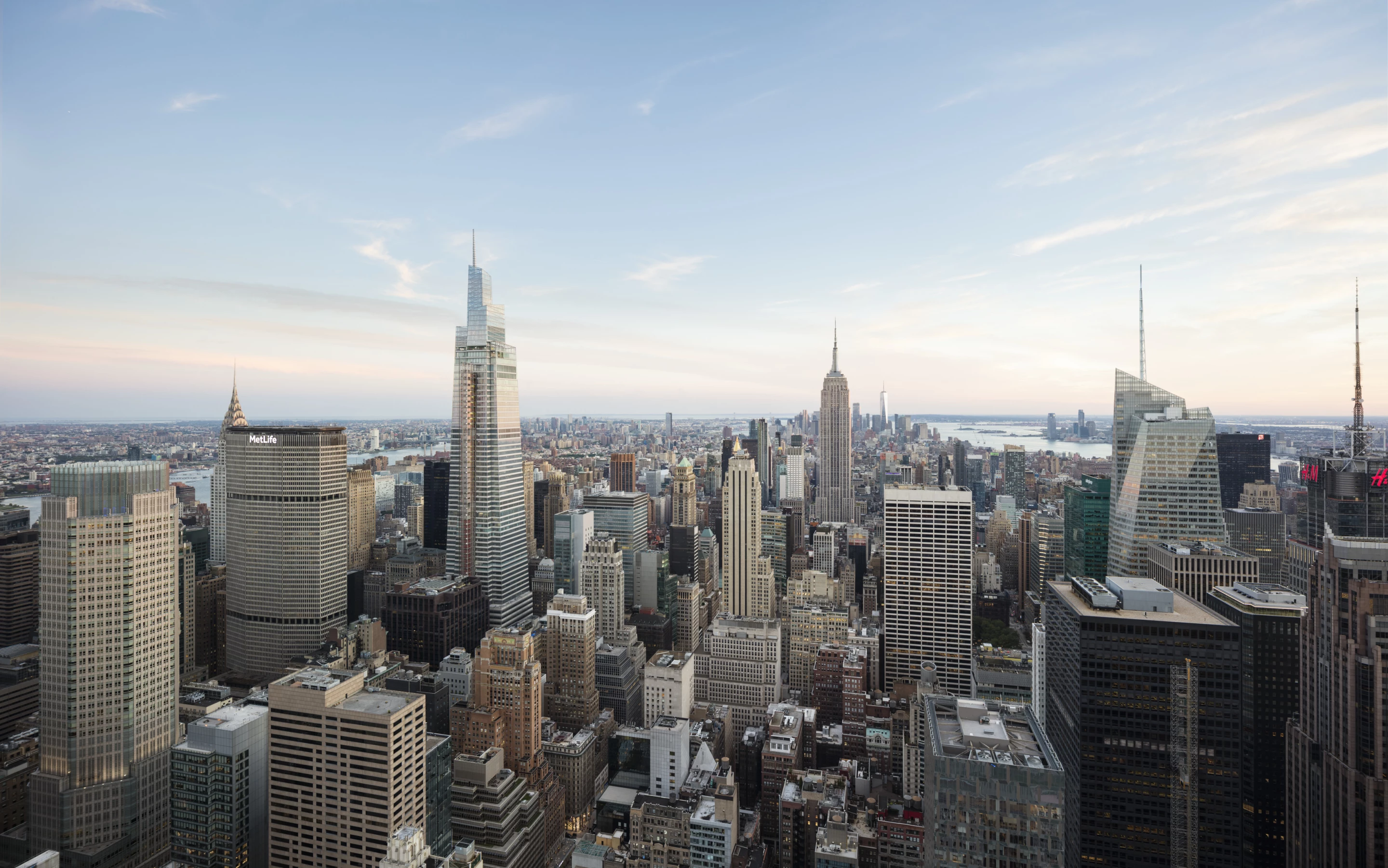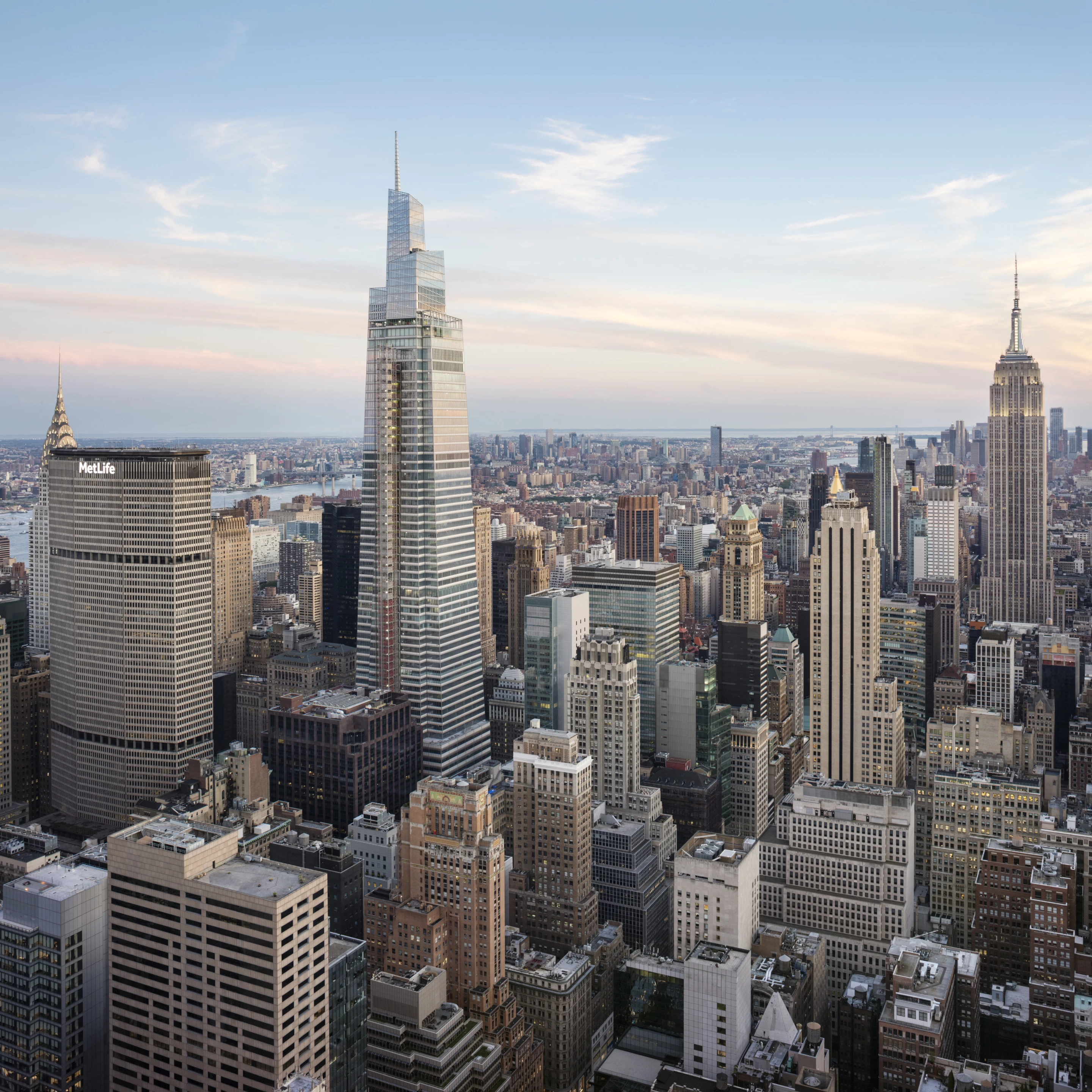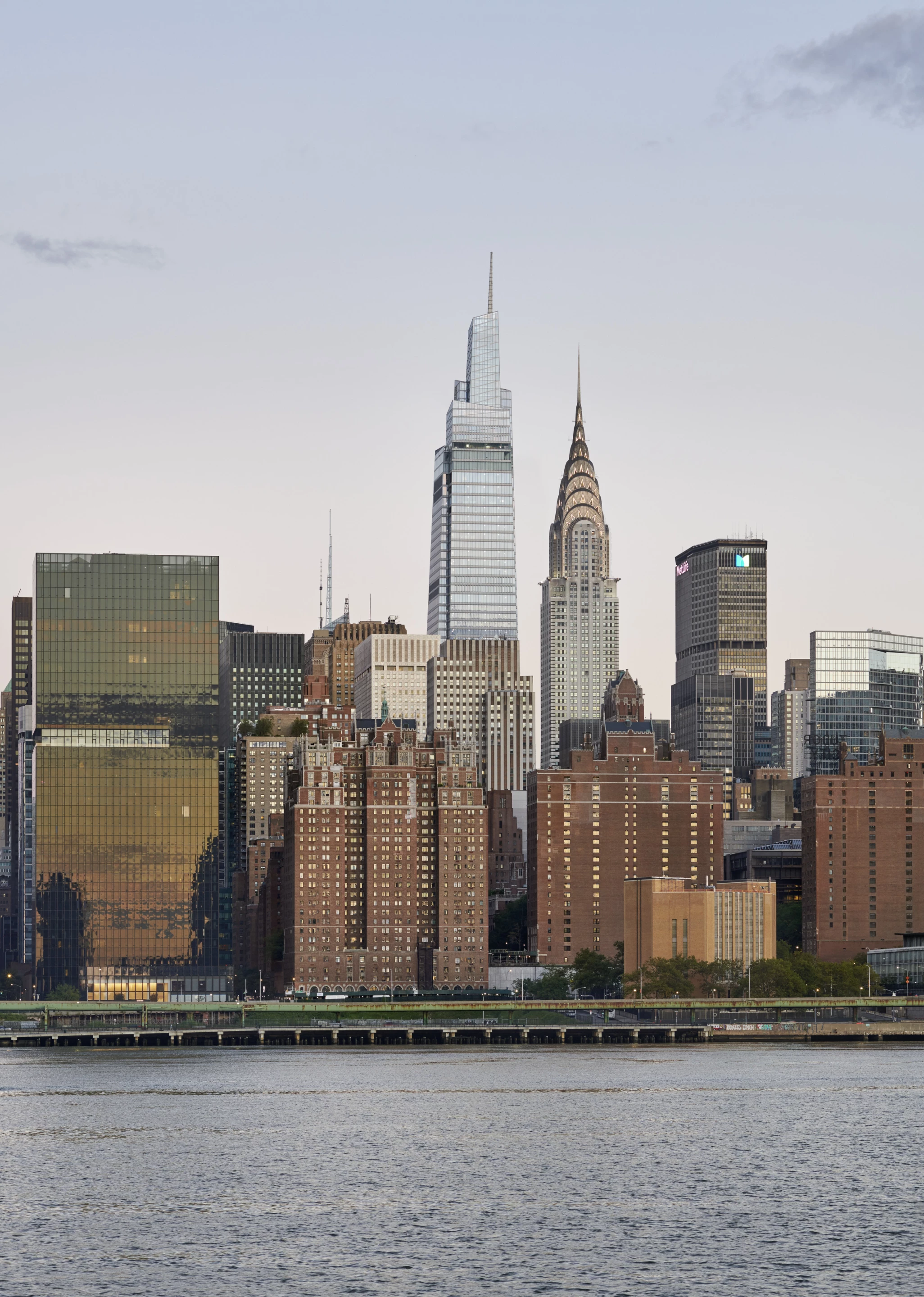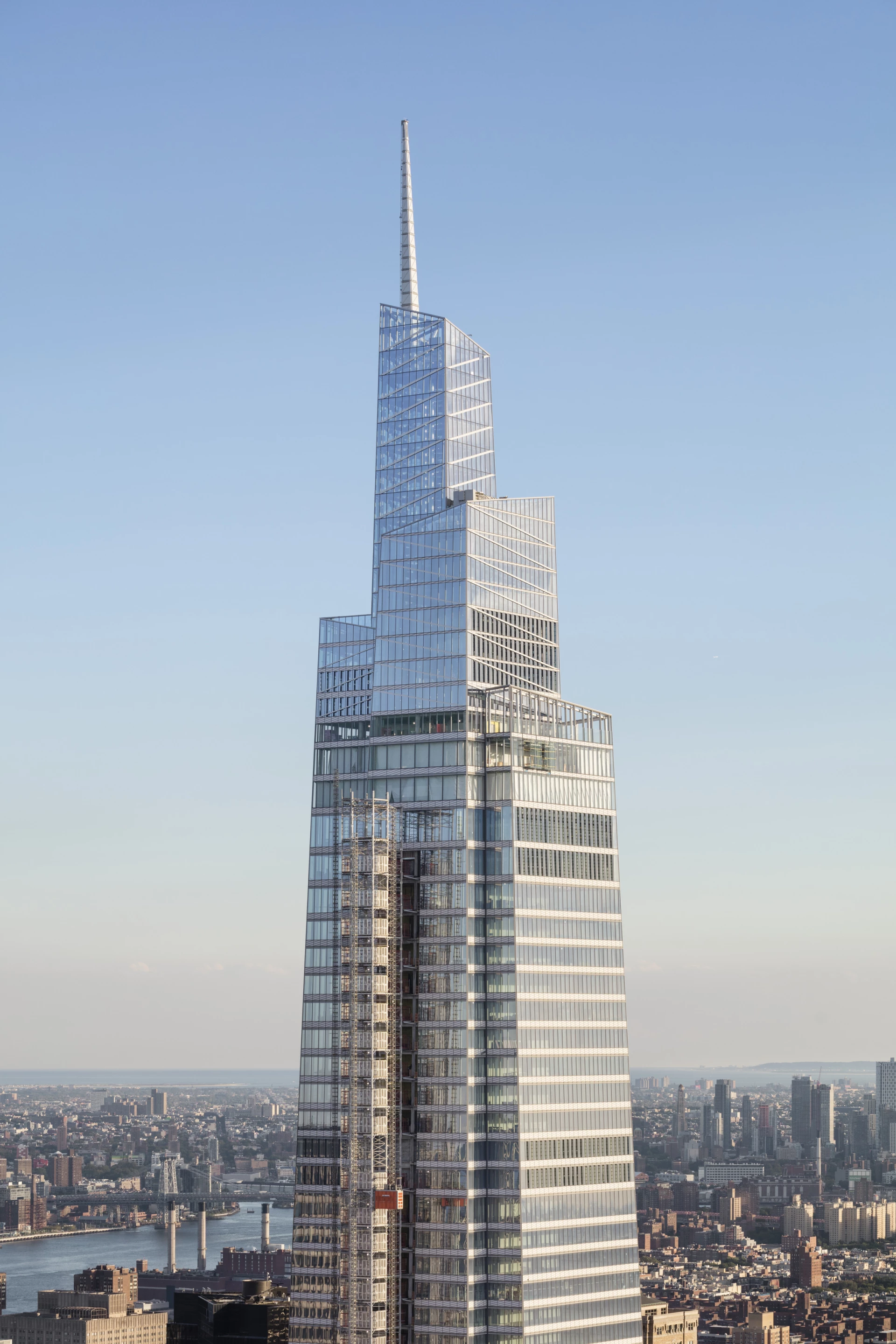While designing the One Vanderbilt skyscraper, Kohn Pedersen Fox Associates (KPF) drew inspiration from NYC's golden era of construction and iconic towers like the Chrysler Building and Empire State Building. However, it also follows a modern approach to sustainability, including rainwater capture and the use of recycled materials.
One Vanderbilt rises to a height of 1,401 ft (427 m) in Midtown Manhattan, making it the fifth-tallest skyscraper in the United States, behind the One World Trade Center, Central Park Tower, Willis Tower, and Steinway Tower. The building comprises a terracotta and glass exterior (the terracotta is meant to complement the nearby Grand Central Terminal building) and consists of four interlocking tapering sections that twist as they rise.
"The One Vanderbilt tower recalls the golden age of New York high rise architecture," says KPF President and Design Principal James von Klemperer. "As a rectangular plan tapered point tower, its prominent top joins the Empire State and Chrysler buildings on the skyline. At the same time, the design gives the high rise a new relevance of social and environmental purpose. The new building connects both spatially and programmatically to Grand Central Terminal. It opens up a visual corridor at the ground plane and establishes a major public plaza, while providing direct access to the station from its lobby."
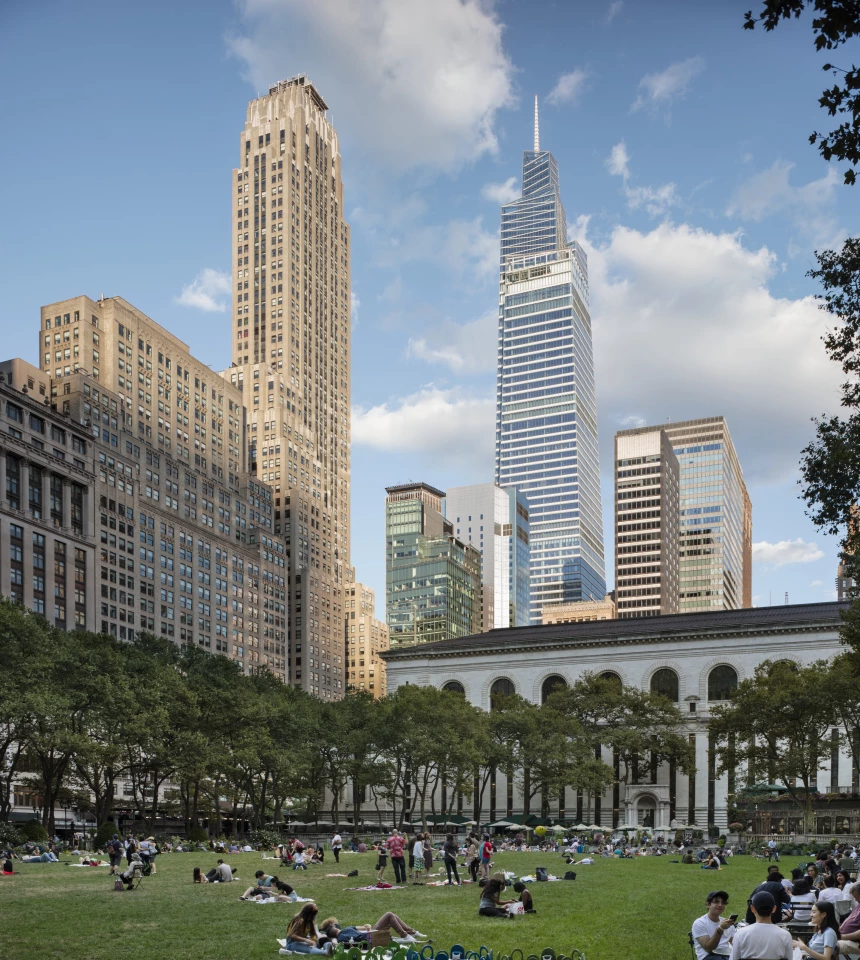
The building's grand lobby hosts a large installation comprising a bronze starburst-like artwork suspended from high-tension cables. Most of the rest of its 67 floors are taken up by 1.7 million sq ft (around 160,000 sq m) of office space, which provides large column-free spaces and 360-degree views with floor-to-ceiling glazing.
Elsewhere lies an amenities floor with outdoor garden space, while near the top is an observation point, which boasts the second-highest outdoor deck in New York City.
While we'd caution against considering any skyscraper "environmentally friendly" in a meaningful sense (with the possible exception of timber skyscrapers), One Vanderbilt does have a significant number of sustainable features which help mitigate its impact on the environment.
It was constructed using steel made of 90 percent recycled content and includes a rainwater collection system connected to a 90,000-gallon (roughly 340,600-liter) tank. High-performance glazing helps regulate its interior temperature and a cogeneration system provides efficient heating and cooling. The project is slated to receive the LEED and WELL green building standards.

KPF also worked with its Urban Interface team to improve pedestrian access both inside the building and the areas around it. The team created custom evaluation tools and analyzed data, resulting in improved transport links, better and more direct public paths, and more daylight reaching street level than it did with the site's previous building too.

